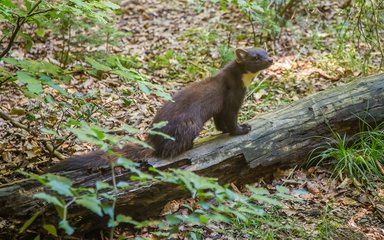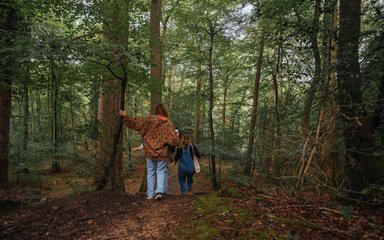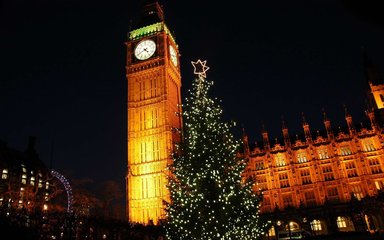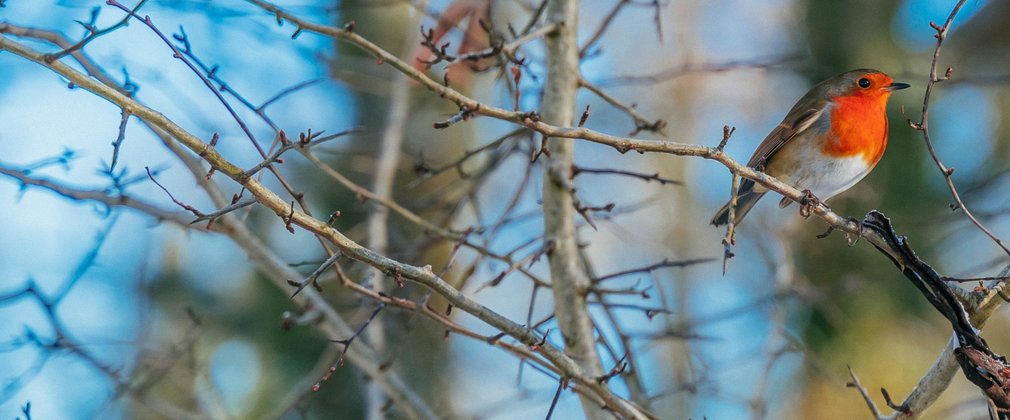
Spot the signs of winter
Winter in the forest is a magical time. Life slows down and, without the rustling of leaves in the wind, the forest falls quiet. Tune in and you’ll notice nature all around you. Experts even say spending time in forests can help with winter blues.
So, wrap up warm and discover these top signs of winter to look out for on your next woodland walk.

A splash of red
Winter berries hanging like baubles on bare branches bring colour to the darkest months. With less foliage on the trees, winter is a great time to spot birds hopping between the branches in search of food.
Robins stand out with their red breasts, traditionally associated with the festive season. Their cheerful song can be heard all through the winter months, unlike many other birds.
Red squirrels can also be more easily seen as they are tempted by the tasty nuts in feeders. Kielder and Whinlatter are among the top forests in England to look for red squirrels.
Did you know robins are known to follow wild boar and feed on the worms and bugs that they root out?
Winter greens in the forest
While deciduous trees lose their leaves and lie dormant during winter, evergreens keep theirs and continue to photosynthesise.
Most conifers have adapted to survive in colder weather and keep their leaves in winter. Their leaves or needles are small with a thick, waxy coating that makes them less likely to get damaged in frost. Pines even produce sap that acts like a natural antifreeze!
Although not a conifer, holly trees also keep their leaves. They've been used for centuries to make garlands and wreaths to decorate homes during winter.
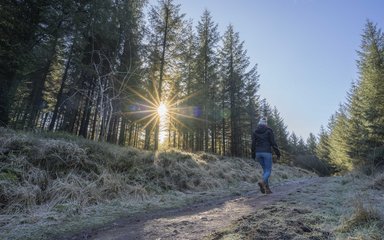
Did you know not all conifers are evergreen? Larch trees turn golden in autumn and lose their needles in winter!
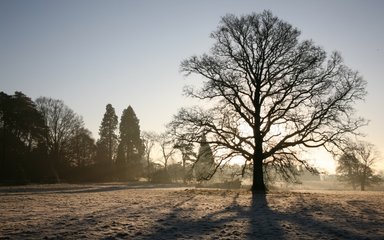
Shapely silhouettes
Broadleaved trees become ghosts of the forest in winter, leaving their skeletons on show. Each species is built differently, with the silhouette of oak being round and stocky with low branches, and birch standing tall and slender with trailing branches.
Although deciduous trees lose their leaves in the winter months, look closely at these bare branches and you’ll see next year’s leaves are ready and waiting to burst out in spring.
Looking at leaf buds is another great way to identify trees in winter. Ash twigs have sooty black buds, beech are long and pointed, and rowan are purple and hairy!
Did you know warmer winters may be confusing trees out of dormancy? Some buds have broken open as early as November.
Animal prints and tracks
Winter is an excellent time to get to know mammals in the forest. You may not meet one face to face, but you can read the tracks and signs they leave behind.
Prints in the mud or snow can show the journeys animals in the forest have made alongside you. You can quickly learn the difference between foxes, badgers and deer.
Take a look at a guide to British animal tracks and remember to take photos so you can identify your tracks more easily when you get home.
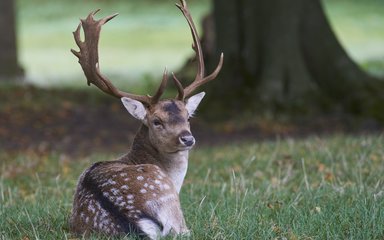
Did you know the only mammals that hibernate in the winter are hedgehogs, dormice and bats?


